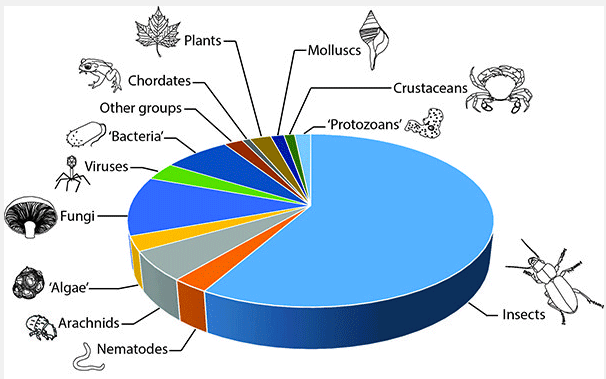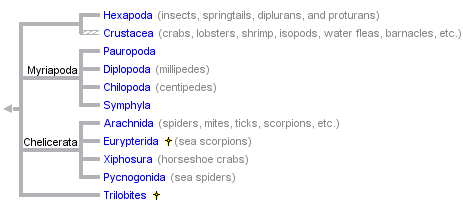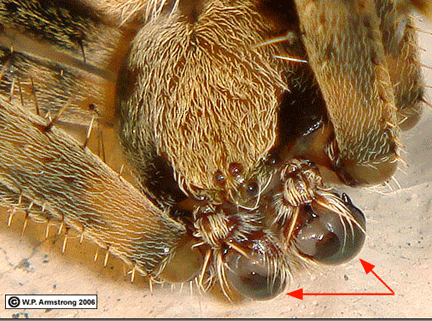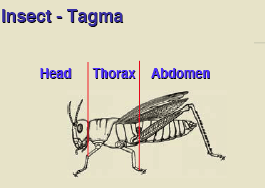

Arthropods
Impossible to do justice to arthropods in any diversity course, even one just about them.
At least one million of the described animal species are insects.
A quote from JBS Haldane, one of the founders of the evolutionary synthesis, illustrates the taxonomic concentration of biodiversity. When asked about what he could divine from nature about the Creator, Haldane replied that he must have had "an inordinate fondness for beetles."
They are Ecdysozoans, have a cuticular skeleton and hence must molt to grow. The most successful phylum they are considered most closely related is the Nematoda. Like nematodes, they shed their outer covering as they grow, but the arthropod cuticle differs both in structure and function from that of nematodes. They posses hard segmented exoskeletons. The molt has a major impact on arthropod life; by some calculations, an arthropod spends 90% of its life preparing to molt, molting, and recovering from the most recent molt.

One of the interesting true morphological synapomorphies is the complete loss of motile cilia in adult and larvae stages.
Since most of the species found as Cambrian fossils are arthropods or relatives, it is appropriate to explore what an arthropod is using these species. Use this website to explore what an arthropod is and then Answer question seven. http://evolution.berkeley.edu/evolibrary/article/arthropods_01 (through arthropods_09)
Then explore what Cambrian critters could be arthropods. http://evolution.berkeley.edu/evolibrary/article/0_0_0/cambrian_01 (through cambrian_21). Answer question eight.
Next read the following material on types of arthropods. You may also find it helpful to explore this webpage http://evolution.berkeley.edu/evolibrary/article/0_0_0/arthropods_10 Click on the various groups on the bottom of the page to explore different characteristics.
Types of Arthropods
Traditionally placing arthropods into groups was based on tagmata or how segments are divided into functional units. Now we also use molecular relationships. Body of primitive forms is homonomous (all body segments are very similar), but in vast majority there is some degree of tagmatization (specialization and fusion of joints). Ancestrally limbs seem to be biramous: one branch for locomotion, the other branch being a gill. Various derived forms lose the gills to become uniramous. Generally chelicerates, myriapods and insects have uniramous limbs, while crustaceans and trilobites have biramous limbs. Limbs of major groups of arthropods also show characteristic numbers, morphologies and functions.
Trilobites
Anterior-posterior burrows divide the body into 3 regions (two lateral, one central). http://evolution.berkeley.edu/evolibrary/article/_0_0/success_02
Merostomata
Appendages on the abdomen (opisthosoma) are flattened and modified for gas exchange as "book gills". The terminal portion of body (telson) drawn out into an elongated spike.
Horseshoe crabs are considered to be living fossils. Limulus, a genus found along the east coast of North America, has remained relatively unchanged since the Triassic Period about 220 million years ago. The North American species migrate to shallow water in the spring, then mate at night during high tide.
http://www.pbs.org/wnet/nature/crash-a-tale-of-two-species-introduction/592/
Important research involving horseshoe crabs.
Pycnogonida (sea spiders)
They lack body tagmata and have a very unique proboscis at the anterior end. They may have a variable number of walking legs. The digestive system extends into the legs, and the pair of simple eyes are positioned near the end of the trunk. Sea spiders are carnivorous, some feeding on other invertebrates by sucking out the juices, while others tear their prey apart and pass it into the proboscis for feeding. Males often care for eggs.
Arachnids
Large arachnids typically have only two body regions—the cephalothorax and the abdomen. Spiders, scorpions, mites, and ticks are typical arachnids. Smaller ticks and mites may only have one body segment. Arachnids have six pairs of jointed appendages.
An example, the typical spider. The first pair of appendages, called chelicerae, is located near the mouth. Chelicerae are often modified into pincers or fangs. The second pair of appendages is called the pedipalps. In male spiders, pedipalps deliver sperm to the female. The four remaining appendages in arachnids are adapted as legs. All spiders spin silk. Spider silk is secreted by silk glands in the abdomen. As silk is secreted, it is spun into thread by structures called spinnerets, located at the rear of the spider.

There are some species dangerous to man.
Black widow ----------------------------------Brown recluse
Extinct giant sea scorpions or Eurypterida are considered part of Arachnida by some, a separate clade by others.
Myriapoda: centipedes and millipedes
Appendages on the third head segment are modified as mandible for chewing or grinding food. Retinula of compound eye contains eight cells.
The myriapods are divided into the centipedes which are active predators and the millipedes which eat plant material. Centipedes have pair of poison claws behind the head, (modified first pair of thoracic legs) and use the poison to paralyze their prey, usually small insects
Centipedes and millipedes mate in the manner typical of many arthropods -- the male produces a packet of sperm called a spermatophore, which is taken up by the female and stored in a pair of internal sacs known as spermathecae, where it is used to fertilize her eggs.
Crustaceans
Crustaceans are the only arthropods that have two or more pairs of antennae for sensing. They have at least two major body tagmata. All crustaceans have mandibles for crushing food. Crustaceans have appendages modified for a variety of function. http://evolution.berkeley.edu/evolibrary/article/0_0_0/success_06
Insects
The Clade (Class) Insecta is the largest group of eukaryotes and there are at least three times as many species of insects as there are all other kinds of animals combined. No one knows exactly how many kinds there are, as many previously unknown species are being discovered each year.
Characteristics include fusion of one pair of head appendages (the second maxillae to form a lower lip (the labrum) and loss of abdominal appendages. There is a pair of antennae and a pair of compound eyes. Insects have three body segments and six legs.

Answer question nine.